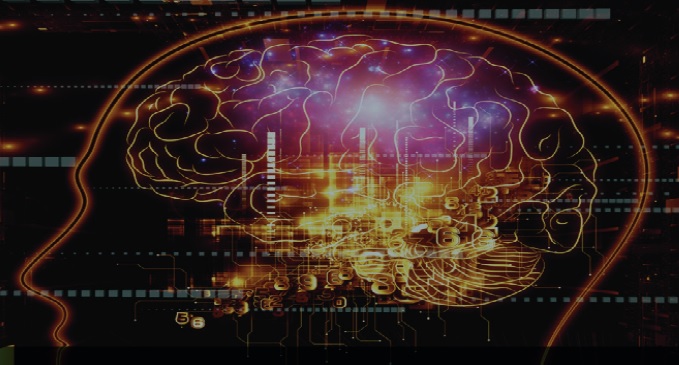
Thanks to digital transformation, enterprise application and IT infrastructure stacks have witnessed a dramatic shift. Enterprises have transitioned from monolithic applications, bare metal infrastructure and virtual workloads to agile microservices, public cloud platforms and containerized deployments. To keep pace with dynamic and distributed digital services, enterprise IT teams have turned to monitoring point tools to solve specific pain points.

With a majority of enterprises investing in ten or more monitoring tools, it is no easy task keeping up with the volume, variety, and velocity of events for hybrid IT environments. Analyst firm EMA has estimated that IT admins can waste more than half their day digging through irrelevant or redundant alerts. How can IT teams focus on the critical events that can impact their business instead of wading through false positives? The emerging discipline of AIOps is a much-needed panacea for detecting patterns, identifying anomalies, and making sense of alerts across hybrid infrastructure.
What is AIOps?
AIOps leverages a broad set of technology approaches, including machine learning, network science, combinatorial optimization and other computational approaches for solving everyday IT operational problems at scale. Enterprises can address a wide variety of IT management activities with AIOps, such as intelligent alerting, alert correlation, alert escalation, auto-remediation, root cause(s) analysis and capacity optimization.
How are digital operations teams taking advantage of this new application of machine learning and artificial intelligence? OpsRamp, recently released its Top Trends In AIOps Adoptionreport. We surveyed 120 IT executives at enterprises with 500+ employees to better understand their operational challenges and see how they’re using AIOps tools.
Here are four insights from the report that offer an inside look into how enterprises are using issue identification, pattern discovery, and predictive analytics to improve IT-service performance:
1. AIOps Is No Longer A Science Project
AIOps adoption is gaining momentum, with enterprises either experimenting or actively using machine learning and data science for hybrid infrastructure management. 68% of IT decision-makers are piloting AIOps to better manage the availability and performance of business-critical IT services.
The bottom line? The use cases of advanced analytics and automation for IT management are just gaining traction. Gartner projects an increase of 40% in AIOps adoption by 2022. It’s not going away any time soon.
2. Data Insights and Root Cause Analysis Drive AIOps Usage
Modern IT services combine legacy datacenter and multi-cloud environments with numerous commercial and open-source monitoring products for tracking service health and performance. AIOps tools are ingesting, storing and analyzing monitoring data and delivering intelligent insights to fix IT service visibility issues.
Nearly three-quarters of these IT teams are using AIOps capabilities to gain more meaningful insights (73%) from system generated and monitoring-related alerts. Two-thirds of respondents are also applying AIOps to cut through the noise and determine the root cause (68%) of performance issues.
The bottom line? Across the board, respondents resoundingly agreed: AIOps is a chief solution in the battle against data smog. In fact, using AIOps to extract the signal from the noise is one of the primary use cases.
3. AIOps Provides Much-Needed Relief
The two big benefits of AIOps are the ability to automate routine functions (74%) and avoid costly service disruptions with faster recovery (67%). AIOps can also drive better anomaly detection (58%), by predicting shifts in system behavior across dynamic production environments.
The bottom line? I believe that as AIOps tools grow in sophistication, IT teams can expect to save time and money with actionable event context and data-driven recommendations. AIOps will let them focus on high-visibility projects instead of mundane operational tasks.
4. Data Quality and Talent Crunch Top Concerns For AIOps Adoption
While AIOps adoption is gaining steam, we found that there are a few apprehensions which could prevent wider adoption. The accuracy of prediction models (54%), quality of large datasets (52%) for machine learning models and the IT talent (48%) needed for building machine learning algorithms are all key constraints for scaling AIOps.
The bottom line? Accuracy, data quality, and transparency are the biggest AIOps roadblocks. IT leaders will need to identify emerging AIOps challenges and partner with technology vendors to prioritize the right solutions.
A Future, Unsupervised
AIOps is gaining traction in the modern enterprise, and it’s easy to see why. In 2018, the only effective way to tame alert storms is to combine human intuition with machine intelligence. IDC’s Worldwide CIO Agenda 2019 Predictions shows that 70% of CIOs will leverage artificial intelligence and machine learning for IT operations to increase staff productivity, drive faster incident response and minimize downtime. Our research corroborates these findings. The future will almost assuredly include a degree of self-healing IT operations management. That degree is still uncertain. But the age of AIOps is definitely upon us.
